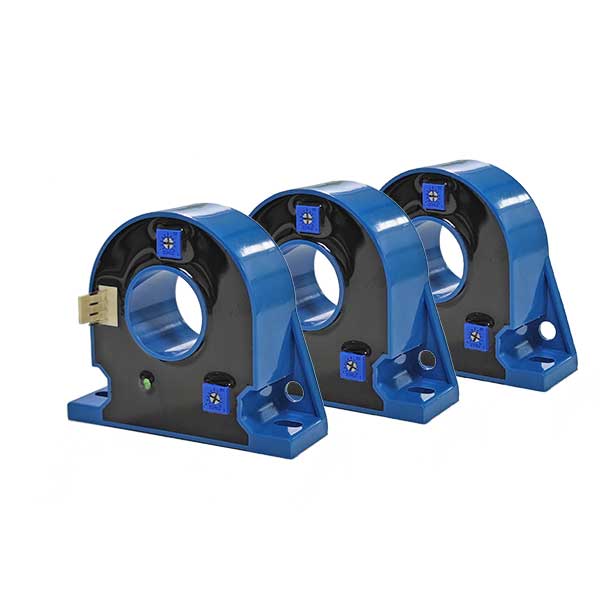
Table des matières
In the realm of electrical engineering, understanding the flow of current is paramount. Whether it’s for monitoring power consumption, protecting circuits, or controlling machinery, accurate measurement of current is crucial.
This is where a transducteur de courant comes into play, serving as an indispensable tool for converting electrical currents into measurable signals. For beginners in the field, delving into the world of electrical transducers can seem daunting. However, with a basic understanding of their principles and applications, one can navigate this terrain with confidence.
What are Current Transducers?
At its core, a current transducer is a device that converts an electrical current into a proportional output signal. This output signal can be in the form of voltage, current, or frequency, depending on the transducer’s design. By utilizing various sensing techniques, current transducers provide accurate measurements of current without the need to interrupt the circuit being monitored.
Types of Current Transducers
Current transducers come in several types, each tailored to specific applications and operating principles:
Hall Effect Transducers
These transducers operate based on the Hall Effect, where a magnetic field perpendicular to the direction of current flow induces a voltage perpendicular to both the current and the magnetic field. This voltage, known as the Hall voltage, is proportional to the current being measured.
Transducteurs à bobine de Rogowski
Rogowski coils are flexible air-core coils that encircle the conductor carrying the current to be measured. When the current changes, it induces a voltage in the coil, which is then integrated to obtain a signal proportional to the current.
Transformateurs de courant (TC)
CTs are perhaps the most common type of current transducers. They consist of a primary winding through which the current to be measured flows and a secondary winding connected to the measuring instrument. The ratio of turns between the primary and secondary windings determines the output current.
Shunt Resistor Transducers
Shunt resistors are placed in series with the load or circuit being measured. The voltage drop across the resistor is proportional to the current flowing through it, allowing for current measurement.
These sensors are reliable and sensitive, and can measure a few milliamperes of direct current. They are often used for battery monitors.
Hangzhi HIT Series Current Sensor – Low Cost As Hall Effect Current Sensor, but a lot better performance. Comparing to the 1% accuracy of hall effect current sensor, HIT current sensors have the following advantages:0.05% accuracy, 50ppm linearity, Less than ±10uA Zero Offset.
The non-intrusive installation of a split-core fluxgate current transducer is one of its key advantages. There is no need to disrupt the circuit by simply clamping the device around the conductor, making it a feasible alternative for monitoring existing systems without generating downtime.
Hangzhi CIT series split core current transducers based on the technologie fluxgate with 0.05% accuracy. These sensors can realize the isolated measurement of DC current and AC current.
Applications of Current Transducers
Current transducers find applications across various industries and fields, including:
Power Monitoring
In electrical systems, monitoring current is crucial for maintaining system stability, preventing overload, and optimizing energy usage. Current transducers play a vital role in monitoring power consumption and ensuring efficient operation.
Motor Control
In industrial settings, precise control of motors is essential for optimizing performance and ensuring safety. Current transducers provide real-time feedback on motor currents, allowing for precise control and protection against overcurrent conditions.
Fault Detection and Protection
Current transducers are integral components of protective relays used to detect faults such as short circuits and overloads. By monitoring current levels, these devices can trigger protective measures to isolate faulty sections of a system and prevent damage.
Energy Management
In renewable energy systems and smart grid applications, current transducers facilitate the monitoring and management of energy flow. By accurately measuring currents in solar panels, wind turbines, and battery systems, these devices help optimize energy production and distribution.
Considerations When Choosing a Current Transducer
When selecting a current transducer for a specific application, several factors must be considered:
Understand Your Application Requirements
Avant de choisir un transducteur, vous devez savoir ce dont vous avez besoin, par exemple le type de courant (CA ou CC), la gamme de valeurs de courant que vous devez mesurer et la précision requise.
Consider Right Measurement Range
Les capteurs de courant ont une certaine plage de courant qu'ils peuvent mesurer avec une grande précision ; cette plage est appelée plage de mesure. Il est crucial de choisir des capteurs avec une plage de mesure. Si la plage est trop élevée, il y a un risque de surcharge du capteur, tandis que si la plage est trop faible, toute la plage de courant ne peut pas être mesurée. La résolution du capteur ou la variation minimale de courant qu'il peut détecter est également cruciale.
Care About the Sensor’s Accuracy and Linearity
La précision et la linéarité sont des considérations tout aussi importantes pour les transducteurs. La précision est le degré de concordance entre les lectures et les valeurs réelles, tandis que la linéarité d'un capteur est sa capacité à conserver une sensibilité constante sur l'ensemble de sa plage de mesure. Pour garantir des relevés précis et fiables, il convient d'utiliser un capteur doté d'une bonne précision et d'une bonne linéarité.
High-precision transducers should have low error rates and provide consistent, reliable readings. Hangzhi IIT industrial current sensor products have high accuracy, linearity & stability, and low temperature drift and zero drift features, and are providing services to our customers with the top performance and effective cost.
Consider Response Time
Le temps de réponse correspond au temps nécessaire à un capteur pour enregistrer les variations de courant et générer les signaux de sortie appropriés. Le choix d'un capteur ayant un temps de réaction rapide garantit des lectures précises et opportunes. Si le temps de réaction est trop long, le capteur ou le circuit risque d'être endommagé dans les situations où le courant varie constamment.
Evaluate Output Signal Type
Check the type of signal that the current transducer sends out. Typical output types include digital signals and analog signals (current or voltage). Verify that the transducer’s output signal is compatible with your control system or data acquisition device.
Conditions Environnementales, Montage et Installation
Tenez compte de l'environnement de travail, notamment de la plage de température, de l'humidité et de l'exposition potentielle à des produits chimiques ou à des vibrations, et choisissez un transducteur capable de résister à ces conditions.
Assurez-vous que les exigences de montage et d'installation du transducteur sont alignées sur les capacités et les contraintes de votre système. L'isolement est également l'un des facteurs dans le choix des capteurs. Assurez-vous que le transducteur fournit un isolement électrique adéquat pour la sécurité et pour éviter les interférences de signal.
Check Compatibility with Existing Systems
Vérifiez la compatibilité du transducteur actuel avec vos systèmes existants. Assurez-vous que la taille physique du transducteur, les options de montage et les connexions électriques s'intègrent parfaitement à votre installation.
La compatibilité réduit la nécessité d'apporter des modifications supplémentaires et garantit une intégration harmonieuse. Vérifiez que le transducteur répond aux normes et aux spécifications requises pour votre système.
Compliance, Standards and Cost
Check that the transducer meets any relevant industry standards and regulations for your application. Consider the cost of the transducer in relation to your budget and the value it provides in terms of performance and reliability.
Check Manufacturer Reputation
Avant d'acheter un capteur de courant, renseignez-vous sur la notoriété de l'entreprise qui l'a fabriqué. Lisez les critiques et demandez des recommandations aux professionnels du secteur. Choisissez un transducteur d'un fabricant réputé, disposant d'une bonne assistance à la clientèle et d'un historique fiable.
Conclusion
Understanding the principles and applications of transducteurs de courant is essential for engineers and technicians working in fields where electrical current measurement is paramount. With the information provided in this guide, beginners can embark on their journey into the world of current transducers with confidence, knowing the fundamental concepts and considerations involved.
